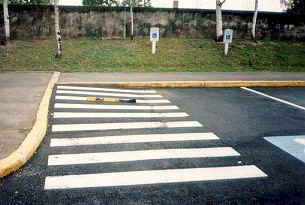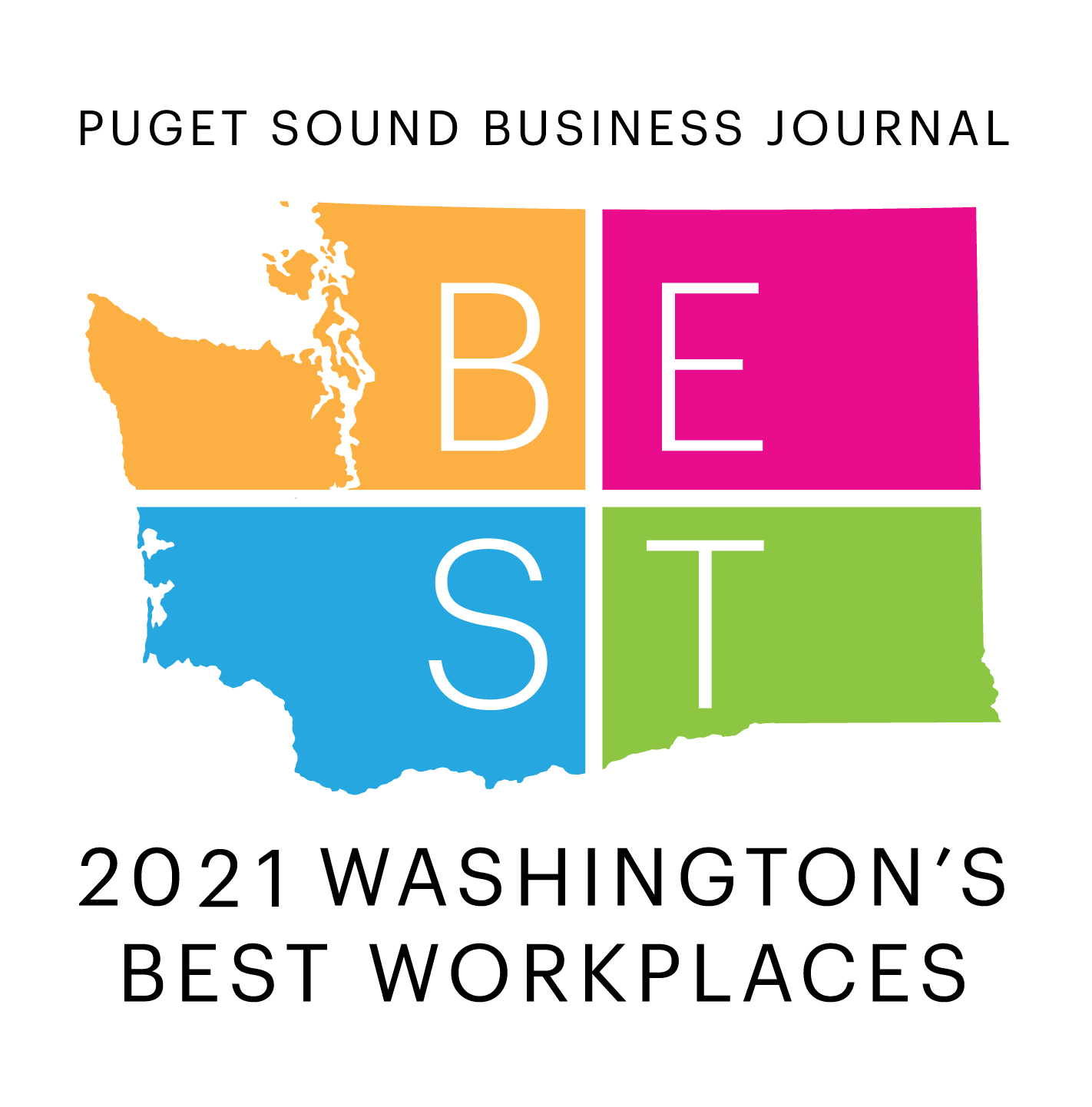Maintaining Your Way Towards Facility Accessibility
By William E. Endelman, AIA
Published under a different title and in revised form in the October 1998 issue "Corporate Real Estate Executive" Magazine by NACORE. (International Association of Corporate Real Estate Executives)
In my work as an accessibility consultant and architect, I have found that companies (and public entities) overlook numerous opportunities to provide improved facility accessibility, and to do so at little additional cost. They miss the chance even when such improvements would be a natural byproduct of the entity’s facility maintenance program. Taking advantage of these opportunities should not be construed as obviating the need for an overall program of making public accommodation areas of such facilities accessible where "readily achievable", as required under the Americans with Disabilities Act (ADA). Let me suggest a number of ways that your organization can begin to remove barriers with little additional effort and expense.
Use your company's maintenance budget and remove barriers at the same time.
Almost all moderate to large businesses have an annual maintenance budget to repair and maintain items such as water fountains, plumbing fixtures, handrails, walkways, finishes, parking lots, locksets etc. As routine replacement of broken or worn out items occurs, replace each one with an accessible model, where they are required to be accessible.
I often cite this true story as an example of missed opportunity. One afternoon, as I was performing an ADA survey of a large facility and citing as a barrier non-accessible handrails at the entry, a maintenance worker was installing a brand new, non-compliant handrail to replace the broken original. The new handrail was 2" in diameter instead of the 1-1/2" required diameter, and lacked the handrail extensions required at the top and bottom. With installation costs being a large component of overall cost, the cost difference for a compliant handrail would have been minimal. Why does this happen? The maintenance staff was simply not encouraged to think about accessibility. This leads to point number two.
Train your maintenance staff on the technical requirements of the ADA, and set accessible building standards for certain items.
Although many maintenance personnel have passing familiarity with some aspects of the ADA, most have neither detailed technical knowledge, nor the important mandate from senior management, to apply ADA standards whenever possible. The technical standards of the Americans with Disabilities Act are documented in ADAAG; the ADA Accessibility Guidelines. This standard is periodically amended as specialty building types and other aspects are further addressed. You should make certain your staff have the essential technical documents on hand and that they understand them. You can get assistance from available Access Board documentation, and/or have an accessibility consultant train them. Excellent information is available to order or download from the Access Board web site: www.access-board.org.
Should you as a facility manager be concerned about the fact that the technical standards evolve? In general, I believe there is little concern that the current standards will be changed or reversed. The amended sections of ADAAG primarily involve refinement to meet specialty building type needs, such as legislative and judicial facilities, children’s facilities, and play structures. There are proposed amendments in the draft stages for developed outdoor recreation areas, golf courses and other areas. Therefore, if your company has some specialty facilities of these sorts, you should become familiar with what is forthcoming. However, don’t delay meeting the requirements of the law because of technical standard issues. Public accommodations should have been made accessible where readily achievable by January 26, 1992!
Setting accessible building standards means specifying accessible products for replacement. For example, determine in advance which model(s) of "hi-lo" accessible water fountains should be used when replacing or adding new ones. Maintain an internal catalog of these items for all your maintenance staff to reference. In addition to increasing accessibility, such a program will provide the added benefits of aesthetic consistency and improved maintainability with fewer parts differences. I am amazed at how may varieties of a single item I will often see at a single site.
When contracting with outside vendors to perform maintenance work, make sure your contracts specify accessible products and installation, and discuss these issues with the vendors.
This expands on item 2, reaching beyond your organization. Outside vendors need good direction. This is simply good contracting and project management. You likely will find some vendors are very tuned into the ADA. Others will say "ADA what?" Use vendors who know their specialty and the ADA.
Write into their contracts that their work is to comply with ADA and applicable governmental agency accessibility codes. Some of the diagrams in ADAAG give key dimensions for toilet stalls, grab bars, turning dimensions, door maneuvering room etc. It is useful to copy these and make them available to your maintenance staff and for contractors. It may save you the cost of reinstalling a new item.
Improve communication between your facility maintenance staff and your real estate/ facility planning staff.
 Since larger companies usually have a number of different people responsible for different aspects of real estate and facilities, there is room for lack of communication. Company growth and change often necessitate facility remodels and/or building expansions, concurrently with routine minor changes and maintenance. Coordinate your expenditures. Sadly, I have seen newly installed "maintenance items" ripped out almost immediately as part of a remodel. Prioritize your expenditures, taking into account temporary situations.
Since larger companies usually have a number of different people responsible for different aspects of real estate and facilities, there is room for lack of communication. Company growth and change often necessitate facility remodels and/or building expansions, concurrently with routine minor changes and maintenance. Coordinate your expenditures. Sadly, I have seen newly installed "maintenance items" ripped out almost immediately as part of a remodel. Prioritize your expenditures, taking into account temporary situations.
If your company has developed various checklists to assist in maintenance or other facility management tasks, add "verifying accessibility aspects" to the list. You may be surprised how effective a small "tickler" is in communicating accessibility needs.
It gets more complex as many companies outsource their real estate and facility management functions. The harried internal managers who direct the outside consultants may find accessibility far down on their list of issues and coordination items. Therefore, communicate in contracts and verbally the importance of integrating accessibility as part of the routine maintenance design, and construction.
Under the ADA and building codes, all newly constructed and remodeled areas should be completed in an accessible fashion. Codes might also trigger other required accessibility expenditures, calculated as a required percentage of total construction cost, for making paths of travel accessible. If you are hiring an Architect or Interior designer, satisfy yourself that the firm knows the laws about accessibility or ask that the firm have a specialty sub-consultant perform an Accessibility Design Review of their drawings. As with any other field, accessibility is one of many specialty areas about which general practitioners may not have substantial experience.
If your company and your contractor are building without benefit of a design professional, using a loosely defined sketch, and doing "hand waving" for clarification, you likely will not be building in compliance with the ADA. Again, I see many brand new non-compliant accessible parking stalls with incorrect curb ramps (as in the photo below), and many not quite compliant restrooms. Another major source of mistakes is not providing required maneuvering space at doors, which can be complex to interpret from ADAAG figure 25. It is usually of minimal cost to get it right from the outset. (See item 3 above.)
Providing accessibility can also enhance risk management.
Just as maintenance and accessibility can work together, so can it work with risk management. Many of the barriers in circulation areas (accessible routes) are also potential "trip and fall" hazards. Non-compliant, high thresholds, coarse paving, loose carpeting, and highly polished surfaces can all be barriers to the mobility impaired, and are addressed in ADAAG. Fixing these problems will provide accessibility and may potentially prevent an injury claim.
Recently I was at a restaurant that had grouted brick pavers on the entry walkway. Some of these pavers had worked loose and created a level change (a barrier). More than one customer was observed catching their shoes on it and mis-stepping. This type of repair can be easily made by maintenance staff, and in the process remove a barrier and a hazard.
In Conclusion
"Maintaining your way towards accessibility" requires that senior management take conscious steps: training facility maintenance staff, setting standards, communicating between key players, and most importantly, adding the concept of universal access to the forefront of your staffs’ minds.
Taking full advantage of your existing facility maintenance program to remove barriers should be just one aspect of a multi-faceted approach to accessibility and to compliance with the Americans with Disabilities Act. If you have not done an ADA survey of your facility, this should be a first step you should consider. It will help you budget, prioritize, and direct your facility maintenance staff to discover where they might make a significant impact on improving accessibility. The documentation will also serve as part of a "good faith effort" towards compliance with the ADA.
And finally, beyond being the law, accessibility is good business. Here is a small illustration. I heard a restaurant owner say, "We haven’t remodeled our entry and restrooms because we have no customers who use wheelchairs." That remark is undoubtedly true. After all, if you were a customer with a disability, would you patronize the restaurants you can’t access, or the ones you can?

